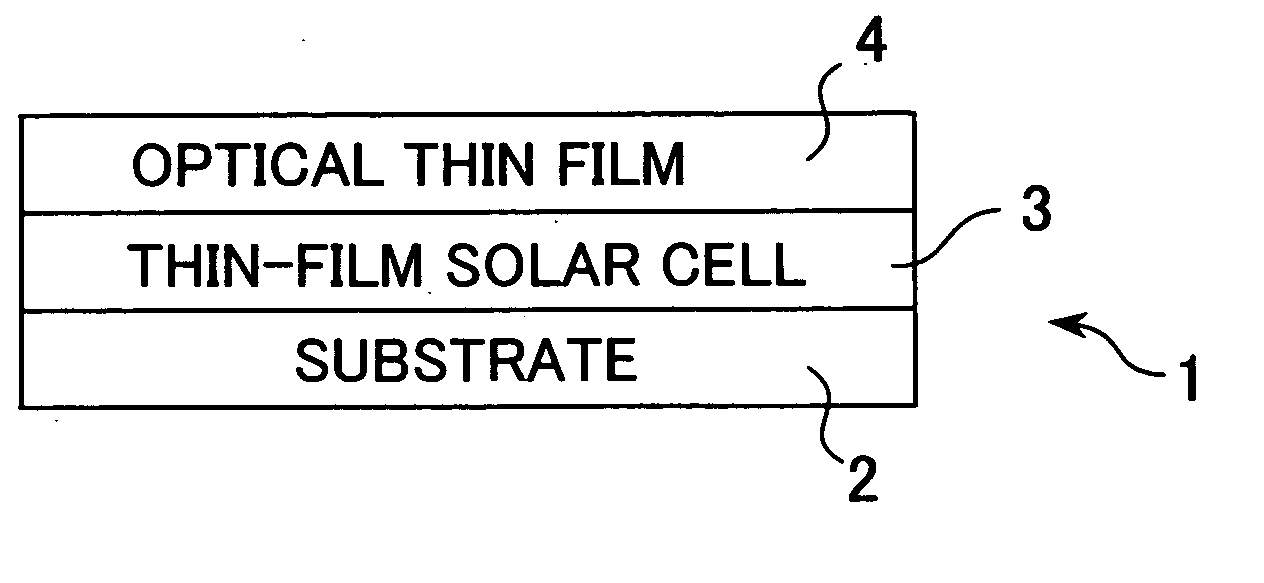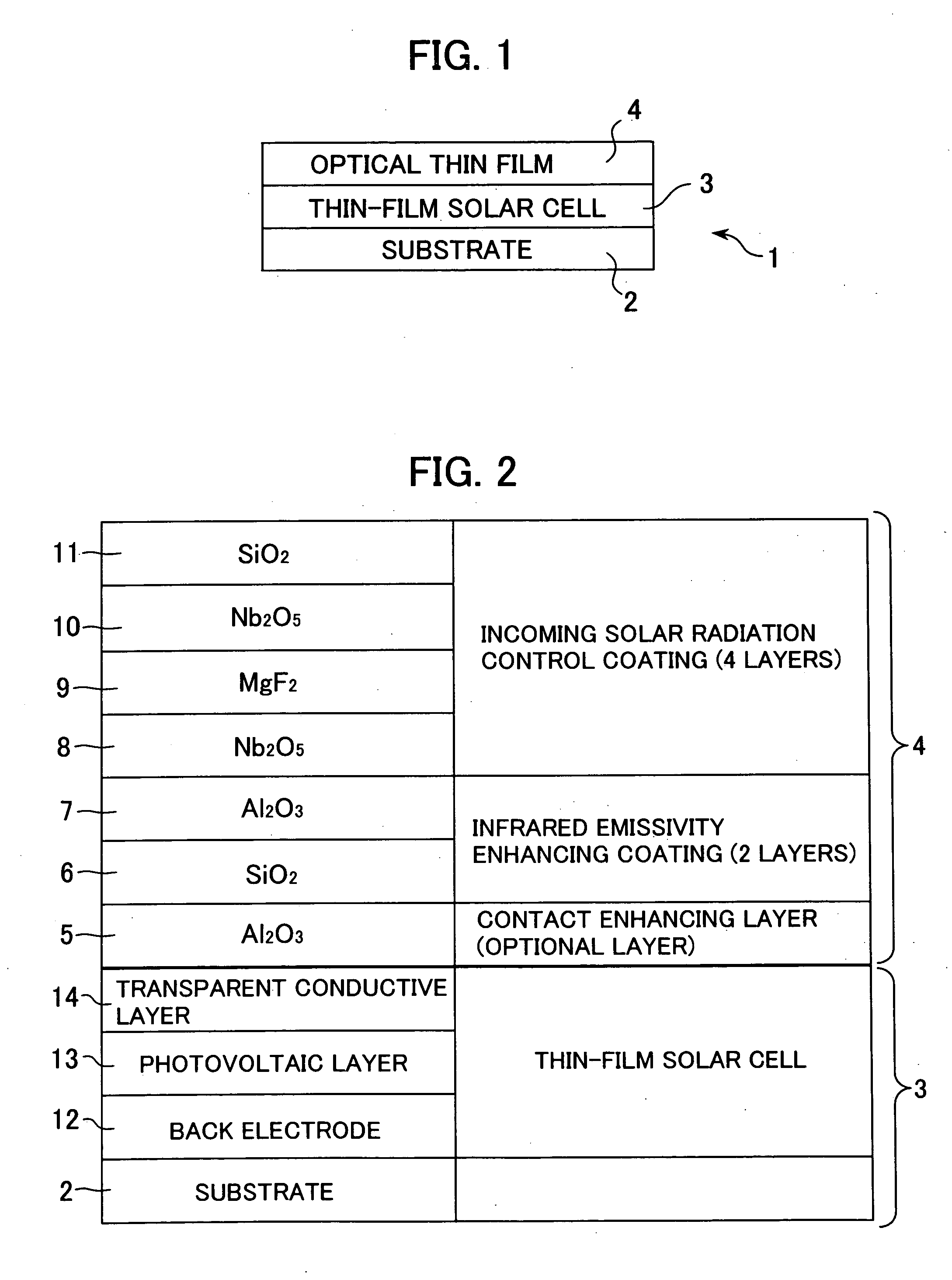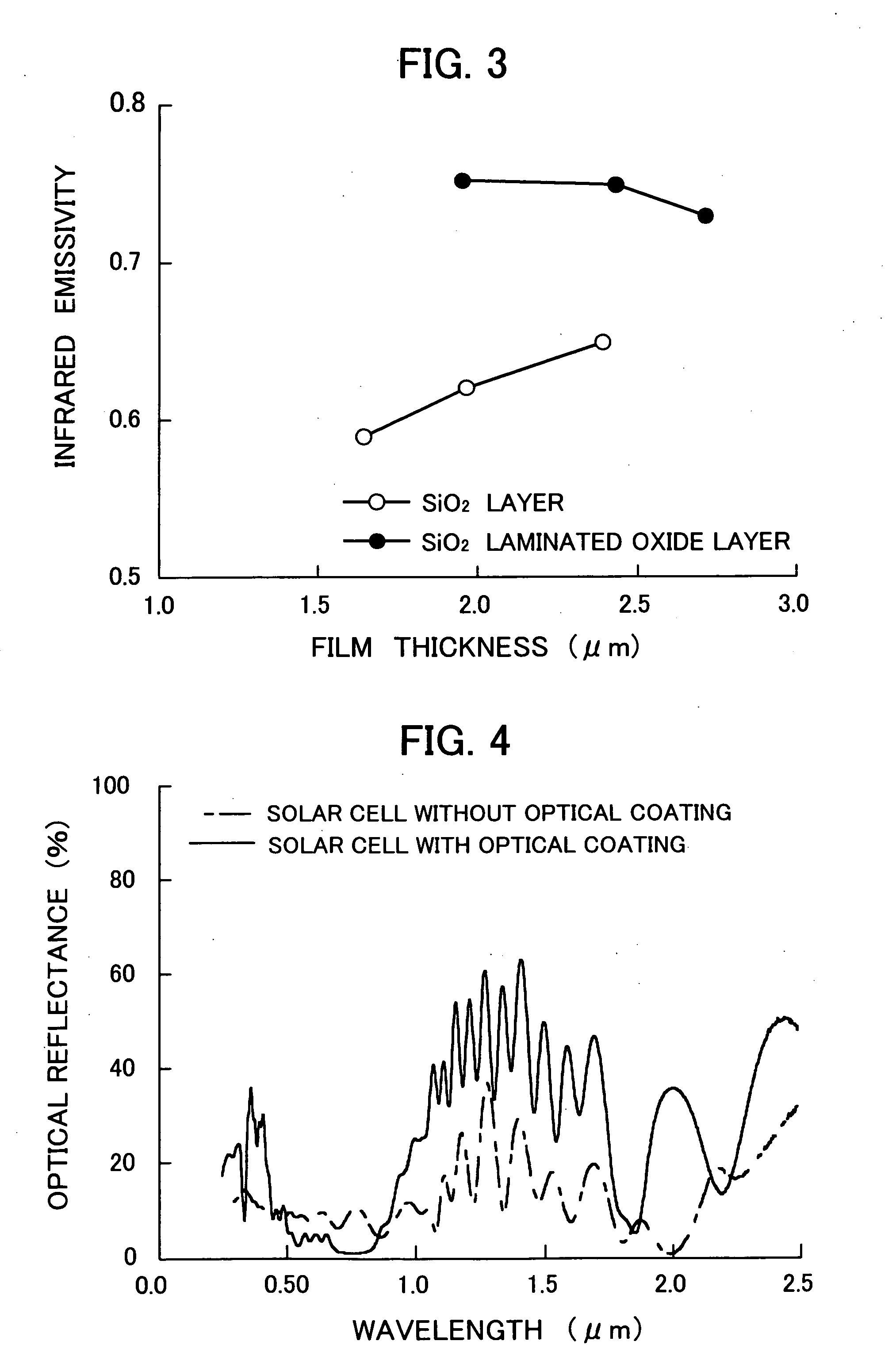Optical thin film for solar cells and method of forming the same
a technology of solar cells and optical thin films, which is applied in the direction of electrical equipment, semiconductor/solid-state device manufacturing, and semiconductor devices. it can solve the problems of inability to apply the cover glass directly to the thin-film solar cell in terms of weight and flexibility, and the conventional cover glass has a problem about the increase in the weight of the solar cell, etc., and achieve the effect of adequate thermal radiative characteristics
- Summary
- Abstract
- Description
- Claims
- Application Information
AI Technical Summary
Benefits of technology
Problems solved by technology
Method used
Image
Examples
Embodiment Construction
[0034] With reference to the drawings, one embodiment of the present invention will now be described. FIGS. 5 and 6 are schematic sectional views showing two conventional solar cell structures 30, 40. FIG. 1 is a schematic sectional view showing a solar cell structure 1 incorporating an optical thin film according to one embodiment of the present invention. As seen in FIGS. 5 and 6, each of the conventional solar cell structures 30, 40 includes a thick cover glass layer (32, 42) for protecting a crystal solar cell (31, 41). This cover glass layer (32, 42) is attached on the crystal solar cell (31, 41) using an adhesive. In the conventional solar cell structure 30 illustrated in FIG. 5, the cover glass layer 32 is directly attached on a top surface of the crystal solar cell 31, and an antireflection coating 33 is formed on an upper surface of the cover glass layer 32. In the conventional solar cell structure 40 illustrated in FIG. 6, the cover glass layer 42 is attached relative to a...
PUM
 Login to View More
Login to View More Abstract
Description
Claims
Application Information
 Login to View More
Login to View More - R&D
- Intellectual Property
- Life Sciences
- Materials
- Tech Scout
- Unparalleled Data Quality
- Higher Quality Content
- 60% Fewer Hallucinations
Browse by: Latest US Patents, China's latest patents, Technical Efficacy Thesaurus, Application Domain, Technology Topic, Popular Technical Reports.
© 2025 PatSnap. All rights reserved.Legal|Privacy policy|Modern Slavery Act Transparency Statement|Sitemap|About US| Contact US: help@patsnap.com



